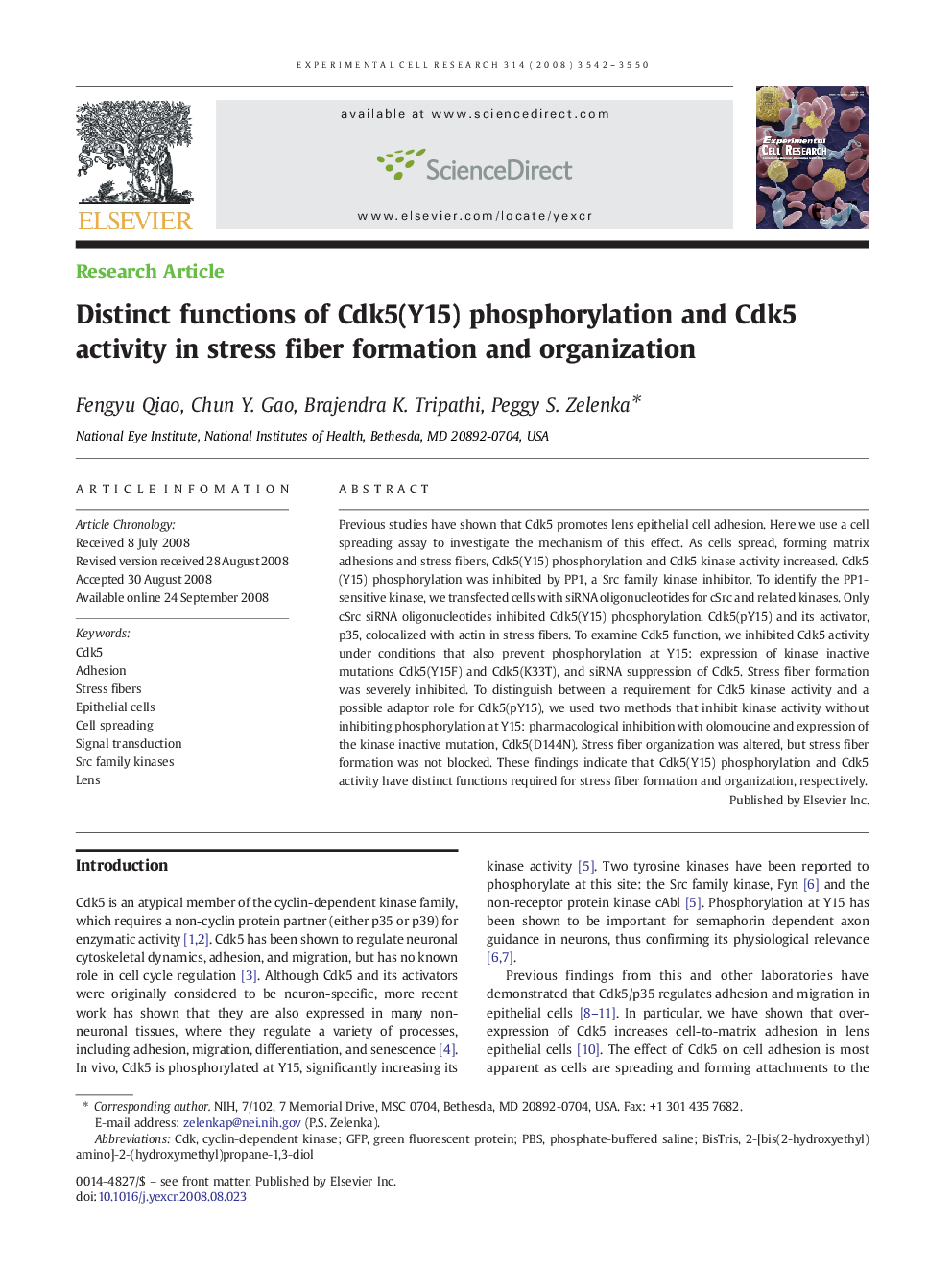| Article ID | Journal | Published Year | Pages | File Type |
|---|---|---|---|---|
| 2132802 | Experimental Cell Research | 2008 | 9 Pages |
Previous studies have shown that Cdk5 promotes lens epithelial cell adhesion. Here we use a cell spreading assay to investigate the mechanism of this effect. As cells spread, forming matrix adhesions and stress fibers, Cdk5(Y15) phosphorylation and Cdk5 kinase activity increased. Cdk5(Y15) phosphorylation was inhibited by PP1, a Src family kinase inhibitor. To identify the PP1-sensitive kinase, we transfected cells with siRNA oligonucleotides for cSrc and related kinases. Only cSrc siRNA oligonucleotides inhibited Cdk5(Y15) phosphorylation. Cdk5(pY15) and its activator, p35, colocalized with actin in stress fibers. To examine Cdk5 function, we inhibited Cdk5 activity under conditions that also prevent phosphorylation at Y15: expression of kinase inactive mutations Cdk5(Y15F) and Cdk5(K33T), and siRNA suppression of Cdk5. Stress fiber formation was severely inhibited. To distinguish between a requirement for Cdk5 kinase activity and a possible adaptor role for Cdk5(pY15), we used two methods that inhibit kinase activity without inhibiting phosphorylation at Y15: pharmacological inhibition with olomoucine and expression of the kinase inactive mutation, Cdk5(D144N). Stress fiber organization was altered, but stress fiber formation was not blocked. These findings indicate that Cdk5(Y15) phosphorylation and Cdk5 activity have distinct functions required for stress fiber formation and organization, respectively.
